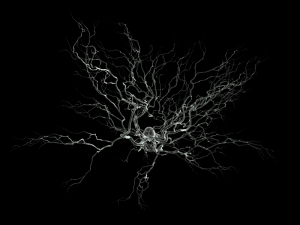FRIDAY, 10 DECEMBER 2010
We spend much of our lives making decisions, most of which occur in a fraction of a second. This involves numerous processes seeking access to the same resource in the brain, and one being chosen over the others. The selection process is regulated by gating processes that mediate fast changes in communication between nerve cells. The structure and function of these networks of nerve cells are complex, so researchers from the Bernstein Centre in Freiburg investigated the connections using a computer simulation.The scientists constructed a model network in which two groups of nerves sent different signals. Meanwhile, a third group, downstream, carried out the gating procedure by choosing which of the signals would be passed along. Both excitatory and inhibitory cells were part of the network, which is a key aspect of how the selection works.
In a network, an excitatory signal can be cancelled out by local inhibition, a balance that leads to no response. However, a gating process can cause an imbalance: the excitatory signal reaches the gating point slightly earlier than the inhibitory one. This delay is what determines the gating; if the time discrepancy is small, the excitatory signal is inhibited before it can be propagated. A larger time difference means the gating is open long enough to allow the signal to pass on.
Earlier empirical studies have also shown that delays can vary in neuronal signaling. It has been previously hypothesised that temporal gating is the mechanism responsible for selecting one signal in the brain over another.
Written by Ayesha Sengupta

